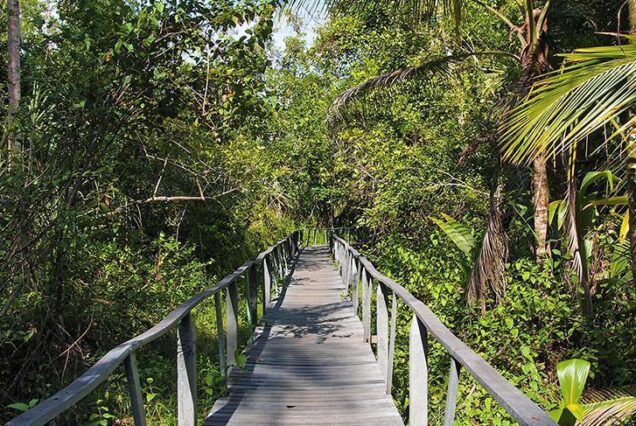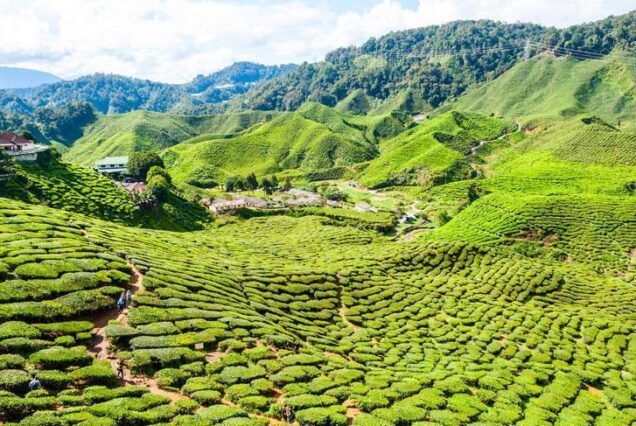This website uses cookies so that we can provide you with the best user experience possible. Cookie information is stored in your browser and performs functions such as recognising you when you return to our website and helping our team to understand which sections of the website you find most interesting and useful.

How do I get to Patagonia?
Patagonia is nestled in the southernmost area of South America, covering a vast range of both Chile and Argentina. Comprising of mountains, forests, expansive lakes and crashing glaciers, Patagonia is a canvas of unspoilt nature.
The main points of entry and exit to Patagonia are Punta Arenas and El Calafate, both of which are connected with daily flights to Santiago, Chile and Buenos Aires, Argentina. Below are the approximate timings for flights into Santiago, Chile:
- From London a direct flight takes 14 hours.
- From Toronto a direct flight takes 11 hours.
- From New York a direct flight takes 11 hours.
- From Sydney a direct flight takes 12.5 hours.
- From Auckland a direct flight takes 11 hours.
You then need to take a regional flight from Santiago to Punta Arenas, which takes 3.5 hours. You can return to Santiago from either Punta Arenas or El Calafate, or alternatively catch a regional flight to Buenos Aires to catch an international flight.
Geography and landscape of Patagonia
Rugged, unspoilt nature dotted with dramatic mountain peaks and glacial lakes. Patagonia lies in the southern section of the Andes Mountains and remains one of the few regions with coasts that sit on three oceans; the Pacific, Atlantic and Southern. While Patagonia spreads across both countries, 90% of the land belongs to Argentina and only 10% to Chile. The entire area of Patagonia covers a massive 1,043,076km squared, but is home to less than two million inhabitants, making it one of the most sparsely populated areas in South America. There are various provinces which exist within Patagonia. In the Argentine side these are Neuquén, Río Negro, Chabut, Santa Cruz and Tierra del Fuego. On the Chilean side these are Aysén and Magallanes.


Culture, Religion and Etiquette
The culture of Patagonia is unique and quite unexpected. Welsh settlers on the coast, swiss chocolate makers in the alpine towns and traditional Mapuche communities dotted throughout. Over the decades, Patagonia has welcomed both Europeans and other internationals who live alongside natives of the region. The residents of the towns and cities within Patagonia hold traditional values, respect for both each other and the land is taken very seriously. The Chilean gaucho, skillful horsemen who’s living is to raise livestock, lives in areas all over Patagonia.
Religious beliefs vary from place to place within Patagonia. Around 75% of Argentinians identify as Roman Catholic and almost 12% as indifferent to religion. On the other hand, almost 70% of Chileans identify as Christian with an estimated 54% members of the Catholic Church. Residents of Patagonia are free to practise the religion of their choice and other faiths found include protestant, Judaism, Islam, Greek Orthodox and Russian Orthodox. There also exists many indigenous religions.
Photography
With its lush landscape and incredible mountain scenery, Patagonia is a photographers dream. From the jaw dropping skyline to the elusive wildlife that will cross your path, we guarantee you will be snap happy at every possible moment when travelling Patagonia. While you certainly don’t need permission to photograph a mountain, there are a few situations where basic etiquette should be followed.
Taking photos of people
While the majority of residents are open and friendly, you should always photograph with respect when travelling. Always ask before taking photos that involve local residents and even other travellers, and remember that no means no. Be particularly considerate of any indigenous communities in smaller towns that you might come across, however if you are sticking to the main tourist destinations in Patagonia this should not be an issue.
Avoid photographing military, police and protests
While you are (very) unlikely to find yourself face to face with a demonstration in the Patagonian mountains, it is common in the cities of Santiago and Buenos Aires which you are likely to use as bases for reaching Patagonia. Avoid taking photos of military personnel, policemen or officials in general. Taking photos might result in your camera being confiscated and taking photos of protests is not recommended. Be cautious and stick to photographing the beautiful scenery!

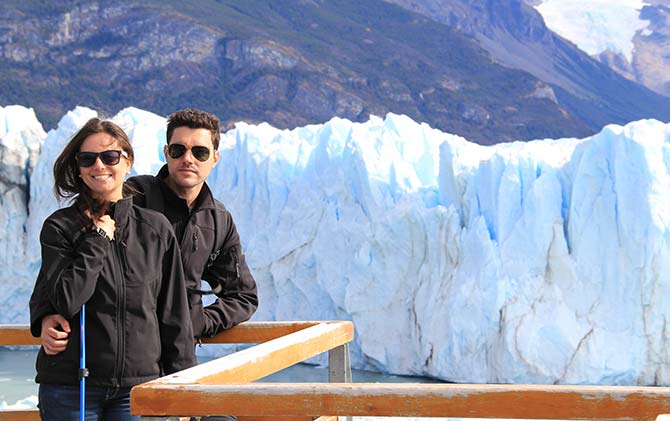
Languages Spoken
The official and most widely spoken language throughout Patagonia is Spanish, in both the Argentinian and Chilean parts. Patagonian Welsh is spoken in Y Wladfa, the Welsh settlement in Patagonia and home to some 72,000 people. Native languages such as Mapuche and Guarani are spoken in indigenous communities and due to European settlers, Italian and French also exists.
English is widely spoken in the tourist towns and hospitality business. Nevertheless it is respectful to learn a few words of Spanish to try and converse with the residents as best you can.
Capital City
Patagonia is a geographical region covering both Argentina and Chile, therefore is not a country of its own and does not have a capital city. The closest capitals of the region are Santiago, Chile and Buenos Aires, Argentina. The city of Nuequén, located in the province of the same name, is the most populated city in Patagonia at 345,000 residents.


Visas
US and Canadian visitors do not need a visa to enter Argentina or Chile, only at least 6 months validity on their passports. However upon arrival to an international airport such as Santiago or Buenos Aires, US citizens are required to pay a reciprocity fee of $140. This can be paid in USD or local currency.
British and Australian passport holders can enter Argentina and Chile visa free for a period of up to 90 days.
Note that visa requirements can change at short notice so it is recommended to check with your local embassy prior to departure.
Population of Patagonia
The population of Patagonia is some 2 million people, with the majority living in the Argentine areas. The most populated areas are Neuquén (345,000 people), Temuco (312,000 people) and Puerto Montt (290,000 people).

Vaccinations and travel health

Mosquito
Mosquito bites should be avoided at all times. Mosquito numbers can be unpredictable in Patagonia but are rarely seen during cold weather or high winds. Nevertheless, it is recommended to bring DEET and antiseptic bite cream and avoid bites at all times. Argentina and Chile are low risk countries in regards to Malaria, however if ill symptoms arise following mosquito bites you should seek immediate medical assistance.
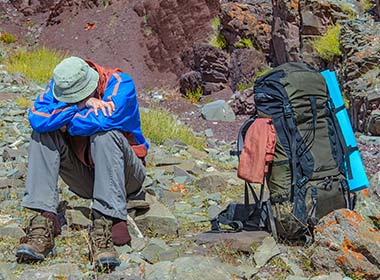
Altitude sickness
In general, altitude sickness is not an issue for travellers to Patagonia as the elevation is not too high on the most popular hikes. The highest point in the W trek is roughly 3600 feet.

Seek Medical Advice

Travel Insurance
Is it safe to drink tap water in Patagonia?
For the most part, tap water is safe to drink in both Chile and Argentina. If you generally have a sensitive stomach then bottled water or purification tablets are recommended however most travellers drink tap water here with little to no problems. The high mineral content in Chile’s water can cause stomach upset if you have a delicate stomach. If you are camping in Patagonia, boiling before drinking is the safest option.
Emergency Calls
Phone numbers will vary depending on whether you are in Argentinian Patagonia or Chilean Patagonia. In case of an emergency you should have a note of the below numbers:
Argentina
Police – 911
Ambulance – 107
Fire – 100
Chile
Police – 113
Ambulance – 131
Fire – 132
All Tucan Travel tour leaders working in Argentina, Chile and therefore Patagonia speak Spanish. If you have a medical issue they will be able to assist in translation between you and the local services. If you have medical requirements you must advise Tucan Travel of this prior to travel.
Electricity and Plugs in Patagonia
Patagonia uses 220 volt electricity with 50hz. Travellers will need either plug type C or I, with two round pins or three flat pins in a triangular pattern.
If camping or enjoying long day hikes, it is advisable to carry a battery pack to recharge your electronics on the go. With so much beauty around every corner, we guarantee your camera battery will be flashing low after a few hours!
Travelling as a single woman

Travelling as a single woman in Patagonia is normally a safe and exciting experience. Crime here is very low and chances are you will be staying in the main tourist areas with direct access to the national parks and many hiking trails. It is advised not to leave valuables in your tent if camping and do not carry an excess amount of money.

For all travellers, We suggest either joining group, guided hikes within Patagonia or sticking to well marked hiking trails that have other people along them. Patagonia is remote and medical assistance can be harder to come by on some of the longer hiking trails. If you roam off the tourist trail and lose phone signal, you are putting yourself in danger should an accident happen. We recommend hiking with caution and ensuring that someone knows where you are at all times, and that you are well prepared for the ever changing climate.
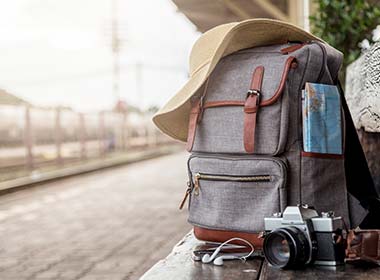
In order to travel to Patagonia, chances are you will transit through either Santiago or Buenos Aires. These are much larger, cosmopolitan cities and travellers should exercise caution as they would anywhere else. Avoid overcrowded areas and ensure you leave valuables locked in a safe in the hotel. Keep your bag zipped and to your front or side when in crowds as petty theft is often the most common problem in these cities.

If you are heading out at night, dress modestly and tell either your tour leader or hotel staff where you are going and what time you plan to be back. Book a licensed taxi through your hotel and do not take an unmarked taxi alone at night. It is not recommended to be out as a solo traveller in the early hours when crimes are generally higher.

Being a popular tourist destination, you will likely bump into other travellers in Santiago, Buenos Aires and Patagonia in general. Group tours also provide an excellent opportunity to make new friends eager to experience the same country as you. An incredible 60% of Tucan Travel passengers are solo travellers!
Wifi and internet access
While we hope you travel to Patagonia to experience the otherworldly wilderness and not to spend all day on the internet, we understand it is important to check in with friends and family and upload the odd jealousy-inducing instagram snap. Wifi is readily available in most hotels in towns and cities throughout Patagonia but connection can be slower than you are used to back home. As expected, Wifi is not available in the national parks and camping sites. Perfect for relaxing and enjoying the company of your new friends!
Phone signal is sporadic and international data packages can be expensive when travelling abroad. It is advised to research the cost of data for your contract in Argentina and Chile before turning on your roaming.
Time zone
Argentina observes Argentine Time all year round, and does not have daylight savings. Northern Chile observes UTC-4 while Southern Chile UTC-3, meaning Punta Arenas is one hour ahead of Santiago. Visit timeanddate.com to calculate the time difference for your location.
Getting around Patagonia
One of the challenges when visiting such a remote area is getting around each destination. Patagonia extends a massive section of Argentina and Chile and travel between towns and national parks can often take 4 to 8 hours or longer. It should also be noted that many parts of Patagonia shut down over the winter season (April to October) as adverse weather conditions often mean road closures and unsafe travelling conditions in certain areas. The infrastructure throughout Patagonia however is very good and roads are well maintained.

Flying
There are a total of 5 bus companies that provide public transport around Iceland – Reykjavik Excursions, Sterna, Strætó, SBA-Norðurleið and Trex. Travelling by bus is a great way to see the diverse countryside landscapes in-between attractions, but it is expensive. It usually costs less to fly or rent a car if there is more than one or two of you travelling.
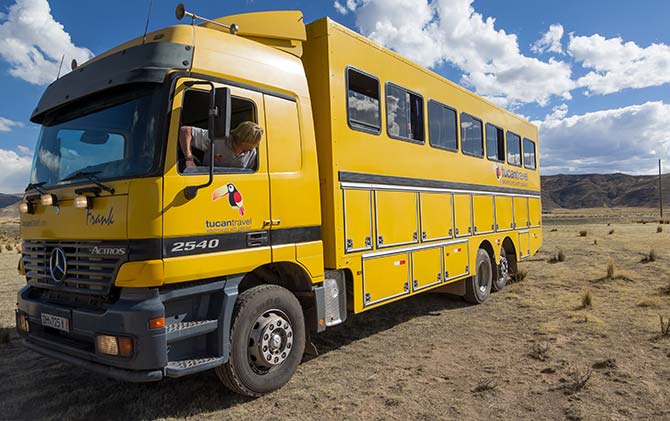
Overland
Travelling Patagonia with an overlanding company is a great way to cover vast distances in comfort. Tucan Travel use custom built overland mercedes trucks, with comfortable seats and large panoramic windows to take in the scenery. Using a private overland truck gives us flexibility to stop for food and toilet breaks when and as we need, as well as the ability to get off the beaten track and stop for some incredible photo opportunities. You can learn more about the Tucan Travel trucks here.
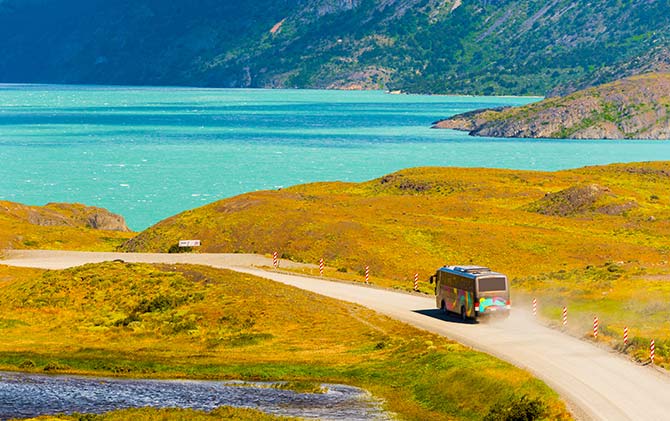
Bus
Public buses are available throughout Patagonia, running from Punta Arenas to Torres del Paine National Park and onto El Chalten and El Calafate. Buses are a cheap and easy way to get around Patagonia but can book up fast during the high season and become overcrowded. Buses in Patagonia are surprisingly comfortable and prices vary depending on the carrier. Some buses offer hot food and snacks on longer journeys. It should be noted that during the low season buses do not run everyday and so you might find yourself waiting a few days for the next bus out!

Hiking
Of course travellers flock to Patagonia for the wonderful hiking and trekking opportunities. While the distances are vast and it is not possible to hike between the destinations in Patagonia, once you have a base there are numerous day hikes in each area. Treks such as the W trek take around 4 days while many day hikes are also possible. The main national parks for the best hiking opportunities are Torres del Paine National Park, Parque Nacional Los Glaciares, Tierra del Fuego National Park and Parque Nacional Nahuel Huapi.

Car
Car rental is possible in Patagonia and practical for those who want to have ultimate flexibility on departure times and where to stop. International companies like Europcar and Hertz operate in Patagonia as well as many local rental companies. It is important to check the reviews before choosing a local company and ensure that the vehicles are safe and serviced correctly. Prices can be quite expensive depending on how long you travel for and if you are based in one location to enjoy multiple day hikes, you will still have a daily rental fee and therefore car rental is not the most financially viable option. Drivers should be confident and aware that the roads can be rugged and often muddy. An international driving license is also essential.

Trains
Train travel in Patagonia is not possible between destinations as no rail infrastructure exists. However you can ride the Southern Fuegian railway located in Ushuaia, also known as the Train of the End of the World. It originally served as transport for timber between the forest and the prison, and is now used to take visitors to Tierra del Fuego National Park. The train is more of an experience than an essential mode of transport.
A Brief History
Patagonia has a long and unique history. While a breathtakingly beautiful corner of the world, the climate is unforgiving and hostile to survival. Early inhabitants would have faced some of the harshest weather in South America and daily life a struggle. There is evidence of human presence as far back as 12,000 years, however archeological experts believe nomad groups existed prior to this. Cave paintings provide great insight into the history of Patagonia, with Cueva de las Manos in Argentina being one of the most famous. The hand paintings found here date back to between 9,000 and 13,000 years ago, while other artwork has been carbon dated to about 7300 BC. Experts believe the cave system was last inhabited around 700 AD, most likely by ancestors of the Tehuelche people. These natives occupied pockets of Patagonia around the Negro River for around 14,000 years prior to the arrival of Europeans. The early inhabitants were called the Tehuelche people, who lived in both the North and South of Patagonia. They were divided into smaller groups, with their own dialect and societal hierarchy. They survived mainly by hunting guanaco and ostrich, using a bow and arrow. They were huntsmen, craftsmen and survival experts, using all the meat and skin from animals for both food and clothing. This remained until the arrival of Europeans many years later.
It is believed that the coast of Patagonia was first explored in 1520 by Ferdinand Magellan. Local inhabitants were described by him as “giants” as they were much larger than their European counterparts. In fact, Patagonia is named after the word Patagone, referring to mythological giants. Scientific exploration took place largely in the second half of the 18th century, with expeditions such as the HMS Adventure and HMS Beagle. In 1832 Robert Fitzroy lead the Voyage of the Beagle, which notably included Charles Darwin, who explored various areas of Patagonia.
Among the first official settlers were the Welsh, who reached Patagonia in 1865. Around 200 people made the journey from Wales to Puerto Madryn in South America, having heard tales of the green and fertile lands, much like that in Wales. They arrived to find barren lands, high winds from the Andes Mountains and little water. The following years proved challenging for the settlers, as the native Teheulche tried to teach them how to survive in such inhospitable conditions. The colony moved onto the Chubut Valley. By 1874, the settlement had a population of 270 people, new irrigation was dug and farms were created. In 1875, the Argentine government finally handed over the land to the Welsh settlers, which brought hundreds more over from Wales. While schooling was in Spanish, the settlers kept their native language and to this day continue to thrive and celebrate their heritage and unique home. Settlers from Italy, England, Spain and further afield started to arrive and brought with them cattle farming. They continued to live in peace with the Tehuelche people. Chilean and Argentinian independence occured in the mid 19th century and saw both countries expand into the south, confronting the indigenous communities that called it home. In 1848, the Chilean government moved their settlement to what we today know as Punta Arenas. This was the start of Chile’s claim to the Strait of Magellan. The indigenous inhabitants were largely defeated. The rise of the gaucho came hand in hand with the introduction of cattle ranches. These nomadic, skillful cowboys helped farmers tend to their cattle and remain an important symbol of life in the Patagonian wilderness.
In the early 20th century, mediated by the British crown, the border was established between Chile and Argentina. While traditionally livestock, mining and agriculture were all key activities to bring money into the economy, the second part of the 20th century saw the start of tourism. Modern day Patagonia still holds strong ties to the gaucho, and has slowly developed with large cities and various expat communities.
We are passionate adventure travelers who want to share the world and our travel experiences with everyone…



